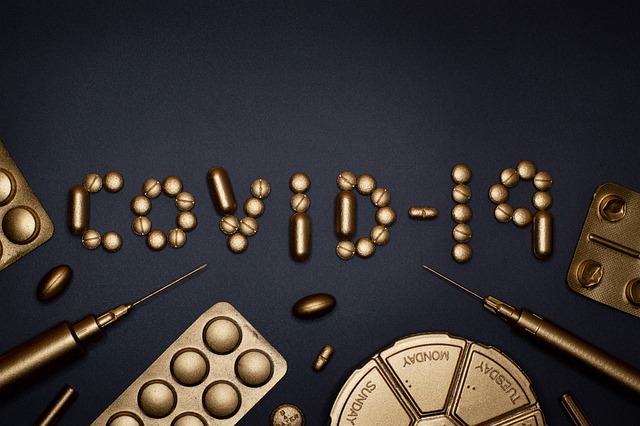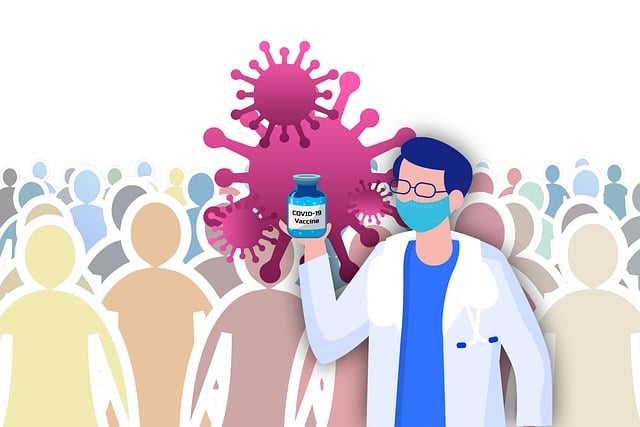Post-Traumatic Stress Disorder (PTSD) is a complex mental health condition stemming from traumatic events. Symptoms include flashbacks, nightmares, anxiety, and heightened arousal, significantly impacting daily life. Effective PTSD treatment combines therapies like Cognitive Behavioral Therapy (CBT), Eye Movement Desensitisation and Reprocessing (EMDR), exposure therapy, and group therapy, empowering individuals to process trauma and develop healthier coping strategies. Lifestyle changes, mindfulness practices, social connections, and complementary therapies also enhance recovery. Key to healing is accessing evidence-based PTSD treatment options for improved quality of life and resilience.
Post-Traumatic Stress Disorder (PTSD) is a powerful force that can disrupt lives, yet manageable through effective therapy. This article delves into understanding PTSD, its common symptoms, and a comprehensive array of therapeutic approaches for treatment. From Cognitive Behavioral Therapy (CBT) to Exposure Therapy and Eye Movement Desensitization and Reprocessing (EMDR), each method offers unique paths to recovery. Additionally, the role of group therapy, peer support networks, and lifestyle changes is explored as powerful tools in the PTSD symptom management arsenal. Discover proven strategies for effective PTSD treatment and reclaim your life.
Understanding PTSD and Its Impact

Post-Traumatic Stress Disorder (PTSD) is a mental health condition that can affect individuals who have experienced or witnessed a traumatic event. It’s more than just feeling scared or anxious; it’s a complex response to an extremely distressing situation. The impact of PTSD can be profound, affecting not just the mind but also the body and overall daily functioning. Symptoms may include flashbacks, nightmares, severe anxiety, depression, and even physical sensations like rapid heartbeat or sweating. These reoccuring memories and emotions can significantly impair one’s ability to live a normal life, making everyday tasks challenging.
The good news is that PTSD treatment is available, offering effective ways to manage symptoms and improve quality of life. Through various therapies, individuals can learn coping mechanisms, process traumatic memories, and regain a sense of control. PTSD treatment focuses on helping people understand their condition, develop healthy strategies for dealing with triggers, and rebuild their resilience.
Common Symptoms of Post-Traumatic Stress Disorder

Post-Traumatic Stress Disorder (PTSD) is a mental health condition that can affect individuals who have experienced or witnessed a traumatic event, such as military combat, violent assault, accidents, natural disasters, or other life-threatening situations. The common symptoms of PTSD often include intrusive memories or flashbacks, avoidance behaviors, negative changes in thoughts and mood, and heightened arousal or hypervigilance.
Intrusive memories are recurrent, unwanted thoughts, images, or feelings related to the trauma, which can cause distressing emotional responses. Avoidance behaviors involve steering clear of places, people, or activities that remind the individual of the traumatic event. Negative changes in thought patterns may include persistent negative beliefs about oneself, others, or the world, along with a distorted sense of reality. Heightened arousal symptoms can manifest as irritability, difficulty sleeping, concentration problems, and exaggerated startle response to noises or surprises. These symptoms significantly impact daily functioning, relationships, and overall quality of life, emphasizing the need for effective PTSD treatment.
Therapeutic Approaches for Effective PTSD Treatment

When it comes to managing Post-Traumatic Stress Disorder (PTSD), a range of therapeutic approaches have proven effective in helping individuals process and overcome their traumatic experiences. Cognitive Behavioural Therapy (CBT) is a widely recognised method that focuses on identifying and changing negative thought patterns and behaviours associated with the trauma. By challenging unhelpful cognitive distortions, CBT enables individuals to develop healthier coping mechanisms and reduce the intensity of PTSD symptoms.
Another powerful therapy is Eye Movement Desensitisation and Reprocessing (EMDR). This innovative approach helps patients process traumatic memories while simultaneously engaging in bilateral stimulation, such as side-to-side eye movements or tactile taps. EMDR facilitates the brain’s natural healing process, allowing individuals to reprocess traumatic events and reduce their emotional impact. Combining these therapeutic techniques often yields remarkable results in PTSD treatment, offering individuals the tools they need to regain control over their lives.
Cognitive Behavioral Therapy (CBT) for PTSD Management

Cognitive Behavioral Therapy (CBT) is a well-established and effective approach for managing Post-Traumatic Stress Disorder (PTSD). This therapy focuses on identifying and modifying negative thought patterns and behaviors that can contribute to the severity of PTSD symptoms. By challenging unhelpful cognitions, CBT enables individuals to develop healthier coping strategies and improve their overall emotional well-being.
The process involves helping patients understand how past traumatic experiences continue to impact their current thoughts and actions. Through structured sessions, CBT encourages individuals to face and reframe distressing memories, reducing the intensity of associated emotions. This evidence-based method has shown remarkable results in PTSD treatment, offering a practical and accessible way for folks to manage their symptoms and regain control over their lives.
Exposure Therapy: Facing Fears to Overcome PTSD

Exposure therapy is a powerful tool in the arsenal of PTSD treatment, focusing on helping individuals confront and overcome their traumatic memories and associated fears. This approach is centered around the idea that by repeatedly exposing yourself to the source of your trauma in a safe and controlled environment, you can learn to manage and reduce the intense emotional responses that trigger PTSD symptoms.
The therapy involves guided imagining or actual relivings of traumatic events, allowing individuals to face their fears head-on. Through this process, patients can gain a deeper understanding of their trauma and develop coping strategies to regulate their emotions effectively. Over time, exposure therapy enables people with PTSD to regain control over their lives, reducing the dominance of traumatic memories and associated symptoms, thereby improving overall well-being.
Eye Movement Desensitization and Reprocessing (EMDR) Technique

Eye Movement Desensitization and Reprocessing (EMDR) is a well-regarded therapy approach for those dealing with post-traumatic stress disorder (PTSD). This innovative method helps individuals process traumatic memories, reducing the intensity of associated symptoms like flashbacks, nightmares, and intense emotional distress. The technique involves guiding the patient through bilateral stimulation, often in the form of side-to-side eye movements, while they focus on specific traumatic events. This process allows the brain to reprocess and reframe these memories, lessening their power over the individual’s emotional state.
EMDR therapy is known for its ability to enhance traditional talk therapy, providing a unique and effective way to confront and overcome PTSD symptoms. By desensitizing patients to distressing memories, EMDR enables them to gain perspective and regain control over their lives. This evidence-based practice has shown remarkable results, offering hope and improved quality of life for those navigating the challenges of PTSD.
Group Therapy and Peer Support Networks

Group therapy is a powerful component of PTSD treatment, offering individuals a supportive environment to share their experiences and learn from one another. In these sessions, people with PTSD can connect with peers who understand their struggles, fostering a sense of belonging and reducing feelings of isolation. Facilitated by a trained professional, group therapy encourages open dialogue, teaches coping strategies, and promotes emotional healing. Participants gain valuable insights, challenge negative thoughts, and develop effective mechanisms to manage symptoms in a safe and non-judgmental setting.
Peer support networks further enhance the recovery journey. These networks provide ongoing connection and understanding, as individuals with PTSD can lean on each other for encouragement, accountability, and shared experiences. Online forums, support groups, or community-based initiatives facilitate these connections, enabling individuals to access a network of peers at any time. Peer support combines practical help, emotional comfort, and a sense of camaraderie, contributing significantly to the overall effectiveness of PTSD treatment.
Lifestyle Changes and Complementary Practices for PTSD Symptom Reduction

For individuals seeking PTSD treatment, incorporating lifestyle changes and complementary practices can significantly aid in symptom reduction. Adopting a structured routine with regular exercise, balanced nutrition, and adequate sleep has been shown to improve overall mental well-being. Engaging in activities like meditation, yoga, or deep breathing exercises can help manage stress and anxiety, common symptoms of PTSD. These practices promote mindfulness and emotional regulation, providing individuals with tools to cope more effectively.
Additionally, social connections and a sense of community play a vital role in PTSD recovery. Building a supportive network through therapy groups, peer support, or engaging in hobbies with others can foster a sense of belonging and reduce feelings of isolation. Complementary therapies such as art therapy, music therapy, or animal-assisted therapy offer alternative avenues for expression and healing. These practices encourage individuals to process their experiences and emotions in unique and often profound ways, contributing to a holistic approach to PTSD treatment.
